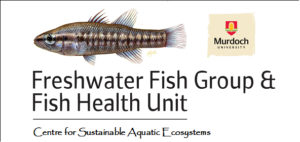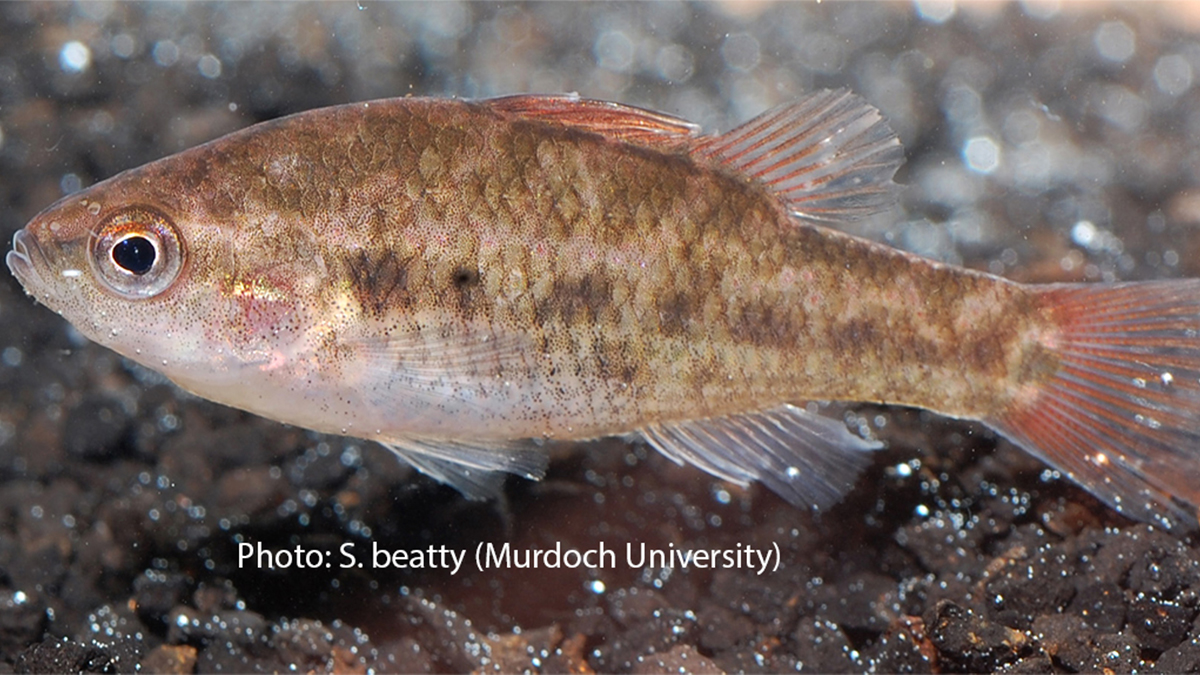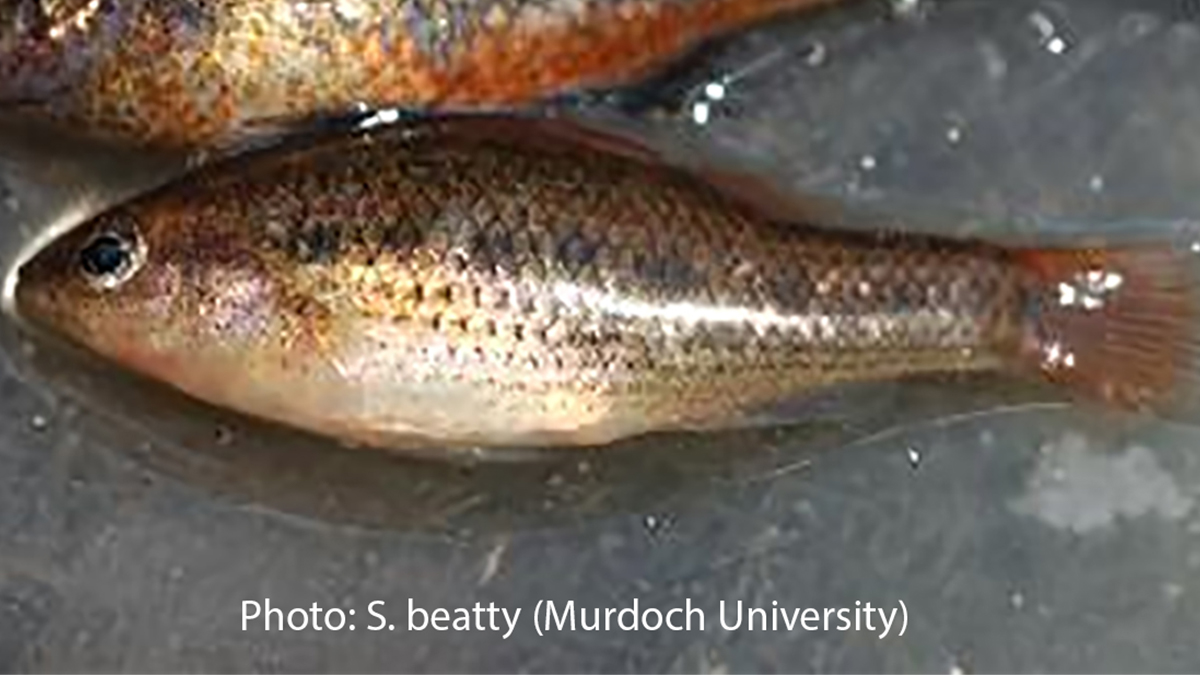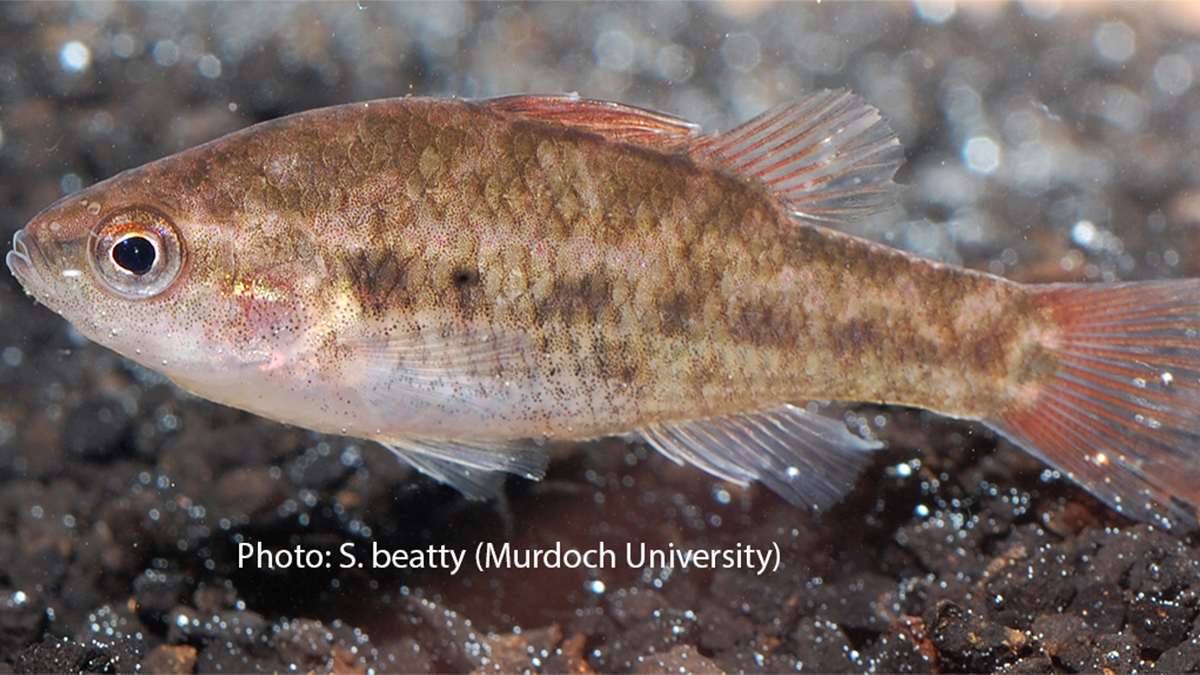Little pygmy perch - Nannoperca pygmaea
This page was created in partnership with the Freshwater Fish Group and Fish Health Unit at Murdoch University
Identification
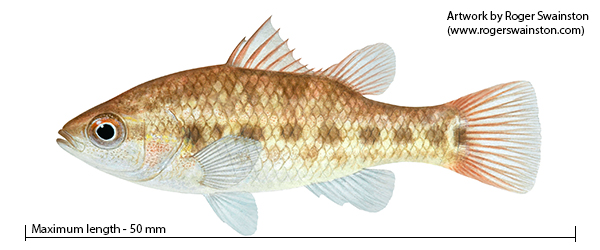
Only recently discovered by David Morgan and Stephen Beatty (Murdoch University) in 2008, and was only formally described in 2013. This is the smallest of all the pygmy perches, and one of the rarest freshwater fishes in the country.
Difficult to distinguish from western pygmy perch, with which it co-occurs. Identification is based on a weight of evidence including: a slightly blunter snout; tan-brown base colouration with a line of square shaped dark blotches on the middle of the sides; absence of pigment on the belly; a dark spot of the base of the tail (where it joins caudal fin) fringed by a pale halo; reddish-orange dorsal and caudal fins; and a pale belly with faint horizontal stripes.
Distribution
The most restricted range of any fish in the south-west, known only from a few locations within the Hay, Denmark and Kent rivers. It is usually found in very low abundances within those locations.
Habitat
Appears to occupy the same habitat as the other pygmy perches (see also western pygmy perch and Balstons pygmy perch), however in the Hay River it migrates into the Mitchell River during winter to spawn, with the resulting new recruits retreating back into the Hay River in late spring as the flows subside and the lower section of the Mitchell River dries.
Similar localised migrations are also believed to occur in other systems in which it is found.
Biology
Similar to the western pygmy perch, the little pygmy perch is a serial spawner, and lives for about three years. Growth is slower than the other two sympatric pygmy perches and they appear to attain maturity in their second year of life, which contrasts the other two pygmy perches, which reach maturity at the end of their first year of life. Spawning occurs between August and October. Spawning occurs in association with late season flow, rising water temperatures (> 12-13° C) and increasing day length.
The species is carnivorous consuming a range of aquatic invertebrates.
Conservation status
Threatened species: Listed as endangered under the Biodiversity Conservation Act 2016 (state, Western Australia), the Environment Protection and Biodiversity Conservation Act 1999 (Commonwealth) and the ICUN Redlist of Threatened Species 2019 (International).
Under the BC Act, Threatened species are listed in the category of critically endangered, endangered or vulnerable. Endangered species are considered to be “facing a very high risk of extinction in the wild in the near future, as determined in accordance with criteria set out in the ministerial guidelines”.
Maintaining refuge habitats is crucial to ensure the long-term survival of the species as is addressing secondary salinisation of the rivers in which it is found.
Further information
Contact the department’s River Science team, or the Murdoch Freshwater Fish Group via email: fish@murdoch.edu.au, or go to their website: www.freshwaterfishgroup.com
